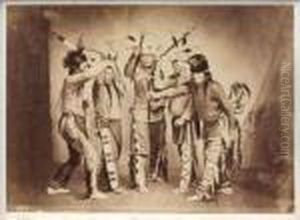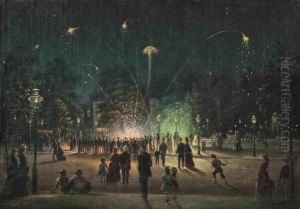Antonien Zeno Shindler Paintings
Antonien Zeno Shindler, also known as Anton or Antonio Zeno Shindler, was a photographer and painter who was born in Austria in 1823. He is known to have immigrated to the United States in the 1850s, where he initially settled in Washington, D.C. Shindler's work in photography began when he became an assistant to the well-known photographer Mathew Brady. Working with Brady, Shindler honed his skills in the emerging field of photography, which was rapidly gaining popularity during the mid-19th century.
Shindler's work took a significant turn when he married Marian Hoopes, who was the daughter of an Indian Affairs official. This connection allowed him to become involved in photographing Native American delegations that visited Washington, D.C. His portraits of Native Americans from this period are some of the most notable aspects of his career, providing a valuable historical record of indigenous people and their leaders during a time of great change and upheaval.
In the 1860s, he moved to the Dakota Territory and continued his work photographing Native American people, including the Sioux. Shindler is also noted for his collaboration with the artist George Catlin, who was famous for his paintings of Native Americans and Western scenes. Shindler helped Catlin by copying and photographing his paintings, and also contributed his own work to Catlin's Indian Gallery.
After his time in the Dakotas, Shindler returned to Washington, D.C., where he continued to work as a photographer. He captured many images of the city and its inhabitants, contributing to the visual documentation of the era. Shindler's photographs are valuable not only for their artistic merit but also for their historical significance, as they provide insights into 19th-century American culture, the lives of Native Americans, and the development of photography as an art form.
Antonien Zeno Shindler died in 1896. His photographs are preserved in various institutions, including the Smithsonian Institution's National Anthropological Archives, where they continue to be studied and appreciated for their contribution to the understanding of American history and the representation of Native American cultures.

